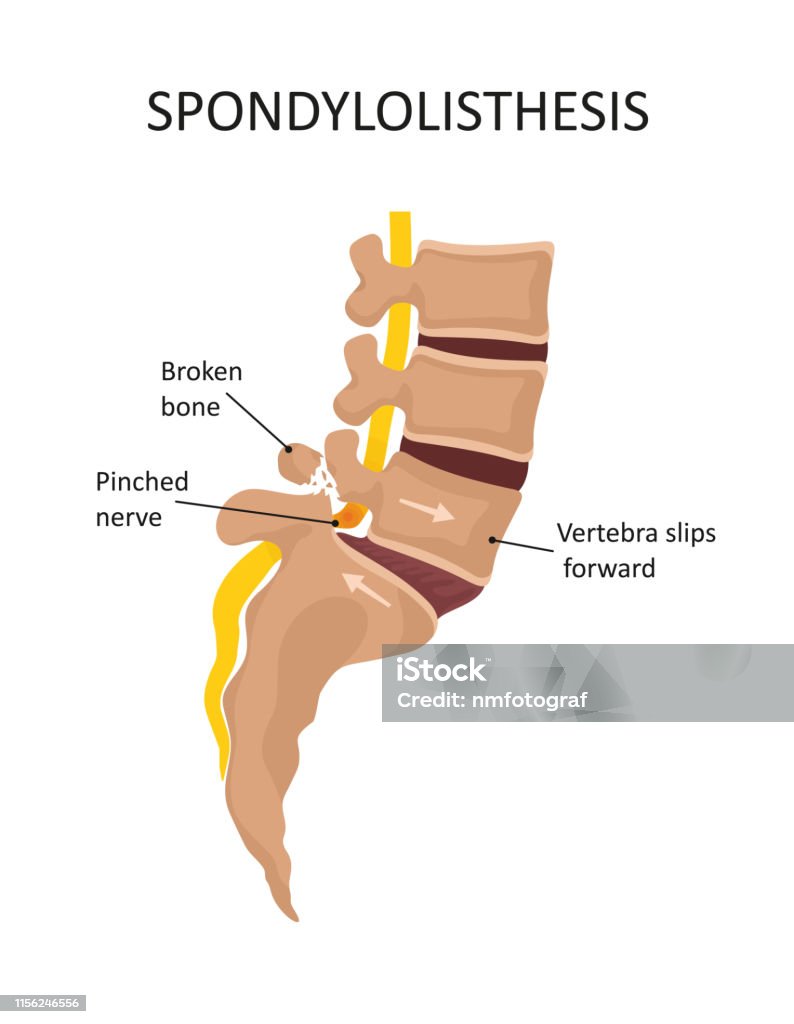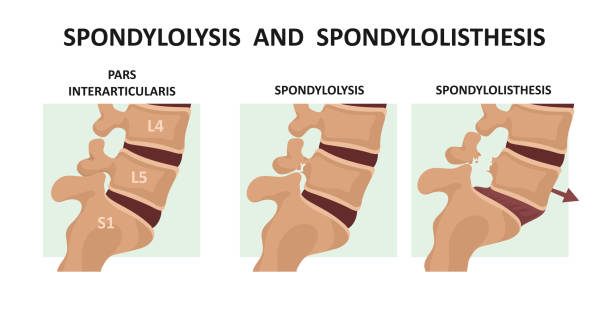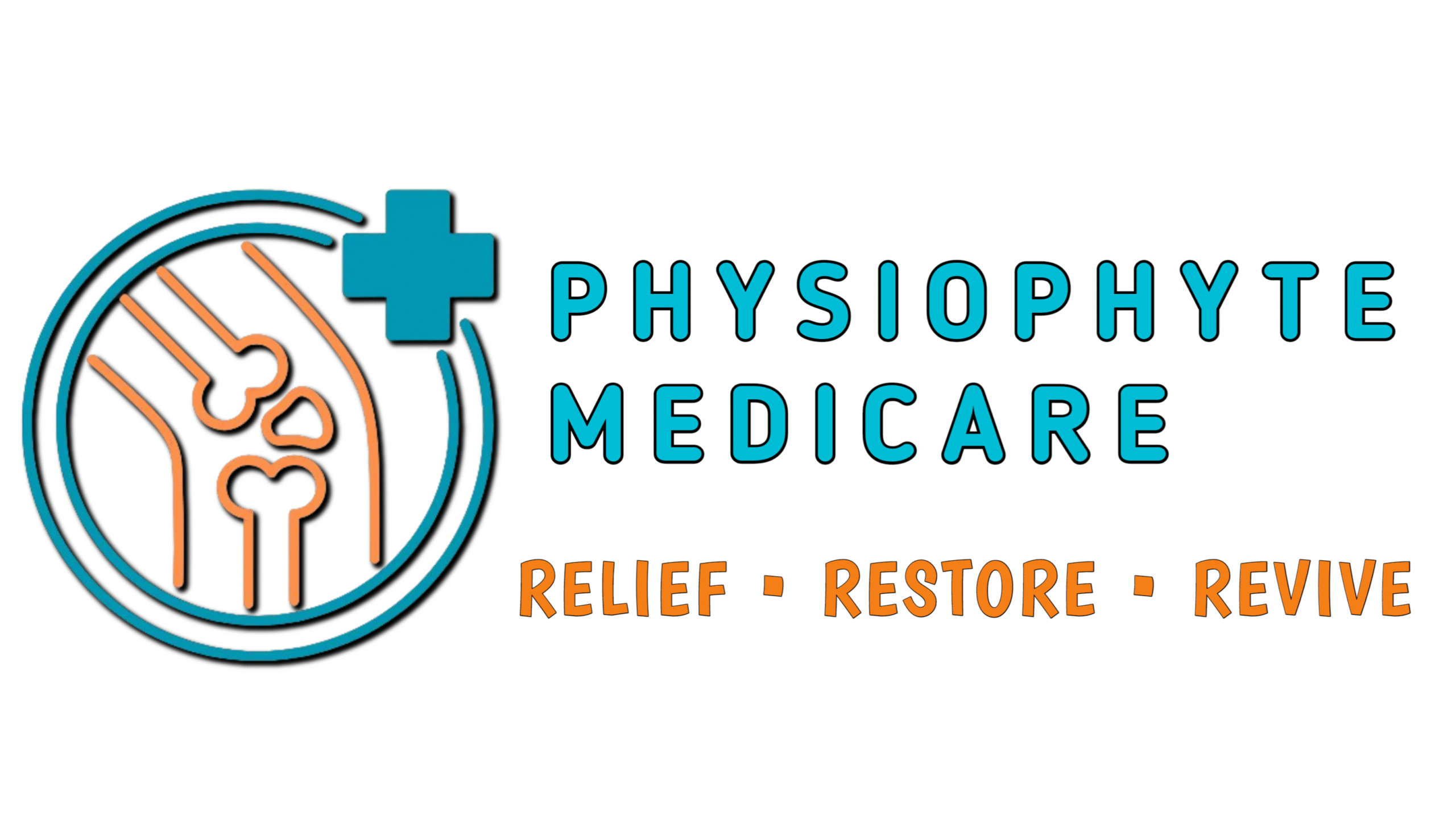
Spondylolisthesis is a common yet often misunderstood spinal condition that affects people of all ages. At Physiophyte Medicare, we specialize in providing personalized and effective home physiotherapy services in Delhi, Gurgaon, Noida, Ghaziabad, Faridabad, and Patna, helping patients manage pain and improve mobility without the need for hospital visits. In this blog, we’ll explain what spondylolisthesis is, its causes, symptoms, and how physiotherapy treatment for Spondylolisthesis can provide relief and long-term support.
✅ What is Spondylolisthesis?
Spondylolisthesis is a condition where one vertebra (spinal bone) slips forward over the bone below it. This slippage can lead to back pain, stiffness, nerve compression, and restricted movement. It commonly affects the lower back but can occur in other parts of the spine as well.

Types of Spondylolisthesis
- Congenital: Present from birth due to spinal abnormalities.
- Isthmic: Caused by a defect in the pars interarticularis, often seen in athletes.
- Degenerative: Due to age-related wear and tear in the spine.
- Traumatic: Resulting from fractures or injury.
- Pathologic: Caused by bone diseases or infections.
✅ Common Causes of Spondylolisthesis
Understanding the root cause is essential for effective management. The most common causes include:
- Age-related degeneration of the spinal discs and joints.
- Injury or trauma that weakens the vertebrae.
- Repetitive stress, particularly from activities like gymnastics or weightlifting.
- Genetic factors that affect spinal structure.
- Obesity, which adds stress on the spine.
- Poor posture and ergonomics at work or during exercise.
✅ Symptoms of Spondylolisthesis
Patients with spondylolisthesis may experience a range of symptoms, including:
- Lower back pain, often worsening with activity.
- Stiffness and difficulty bending or twisting.
- Numbness, tingling, or weakness in the legs.
- Sciatica – shooting pain down one or both legs.
- Muscle spasms.
- Postural changes or imbalance.
- In severe cases, bladder or bowel dysfunction.
✅ How Physiotherapy Helps in Spondylolisthesis Treatment
At Physiophyte Medicare, we focus on non-surgical, personalized physiotherapy care that targets pain relief, mobility improvement, and functional restoration.
Benefits of Physiotherapy for Spondylolisthesis
- ✅ Pain Management: Techniques like TENS therapy, heat packs, and manual therapy reduce inflammation and discomfort.
- ✅ Strengthening Muscles: Core and back strengthening exercises improve spinal support.
- ✅ Improving Flexibility: Stretching exercises enhance movement and reduce stiffness.
- ✅ Correcting Posture: Ergonomic advice and posture correction prevent further slippage.
- ✅ Balance and Stability Training: Helps prevent falls and improves coordination.
- ✅ Lifestyle Modifications: Guidance on weight management and proper daily activities.
- ✅ Home Physiotherapy Support: For patients unable to visit clinics, our physiotherapists provide treatment at home in Delhi, Gurgaon, Noida, Ghaziabad, Faridabad, and Patna.
✅ Treatment Plan at Physiophyte Medicare
Our approach to spondylolisthesis is holistic and patient-centered. Below is the typical treatment process:
Step 1 – Detailed Assessment
- Medical history review.
- Physical examination to understand pain points.
- Postural analysis and mobility tests.
- Functional limitations assessment.
Step 2 – Customized Physiotherapy Plan
- Pain management protocols.
- Therapeutic exercises targeting core stability.
- Corrective postural training.
- Flexibility exercises for muscle relaxation.
- Activity planning and ergonomic adjustments.
Step 3 – Home-Based Care
For patients living in Delhi, Gurgaon, Noida, Ghaziabad, Faridabad, and Patna, our expert physiotherapists visit homes to provide:
- One-on-one sessions.
- Personalized exercise plans.
- On-site therapy tools and equipment.
- Continuous monitoring and adjustments.
Step 4 – Follow-Up and Support
- Regular progress tracking.
- Modifications in exercise plans.
- Counseling for mental well-being and motivation.
- Preventive care strategies to avoid recurrence.
✅ Why Choose Physiophyte Medicare for Spondylolisthesis Treatment?
- ✔ Experienced Physiotherapists trained in spine care.
- ✔ Evidence-Based Protocols backed by research.
- ✔ Home Physiotherapy Services for comfort and convenience.
- ✔ Location-Specific Care across Delhi, Gurgaon, Noida, Ghaziabad, Faridabad, and Patna.
- ✔ Affordable and Transparent Pricing.
- ✔ Compassionate Patient Care ensuring dignity and trust.
✅ Exercises Commonly Prescribed for Spondylolisthesis
Always consult your physiotherapist before starting any exercise program.
- Pelvic Tilts
- Strengthens core muscles and reduces lower back strain.
- Bridging
- Enhances gluteal strength to support spinal alignment.
- Knee-to-Chest Stretch
- Relieves tightness in the lower back muscles.
- Bird-Dog Exercise
- Improves coordination and balance.
- Wall Sits
- Builds endurance in back and leg muscles.
- Core Stabilization Drills
- Maintains posture and prevents further slippage.
✅ Lifestyle Tips to Support Recovery
- Maintain a healthy weight.
- Avoid prolonged sitting or standing.
- Use ergonomic chairs and desks.
- Practice proper lifting techniques.
- Stretch daily to keep muscles flexible.
- Follow your physiotherapy schedule consistently.
- Get adequate sleep and hydration.
✅ Final Thoughts
Spondylolisthesis doesn’t have to control your life. With expert care, guided exercises, and compassionate support, you can regain strength, reduce pain, and live comfortably. At Physiophyte Medicare, we are committed to helping you through every step of your recovery—whether at our centers or from the comfort of your home in Delhi, Gurgaon, Noida, Ghaziabad, Faridabad, or Patna.
Take the first step toward a pain-free life. Contact us today and let our experts guide you with personalized treatment options for spondylolisthesis and other spine-related conditions.
For patients seeking specialized treatment across major cities, Physiophyte Medicare offers services at multiple locations:
- Explore home physiotherapy in Delhi for expert spinal care.
- Our Gurgaon physiotherapy at home for personalized treatment plans.
- Check Noida physiotherapy services for spine-related disorders.
- Learn more about Ghaziabad’s home care programs for chronic pain.
- Get access to Faridabad physiotherapy treatments at your doorstep.
- Discover how Patna’s home physiotherapy services support recovery from spondylolisthesis.
✅ FAQs About Spondylolisthesis
Can spondylolisthesis heal on its own?
In mild cases, with proper rest, exercise, and physiotherapy, symptoms can be managed effectively without surgery. However, severe cases may require more intensive interventions.
Is surgery always required?
No. Many patients improve with physiotherapy, lifestyle changes, and medication. Surgery is considered only if there is significant nerve damage or instability.
How long does physiotherapy take to show results?
Improvement varies, but patients often experience relief within 4–6 weeks when exercises and therapies are followed regularly.
Can I continue working if I have spondylolisthesis?
With proper guidance, posture correction, and exercises, most people can maintain an active lifestyle without worsening their condition.
Does Physiophyte Medicare provide home visits for spondylolisthesis treatment?
Yes, we offer expert home physiotherapy services in Delhi, Gurgaon, Noida, Ghaziabad, Faridabad, and Patna tailored to each patient’s needs.

